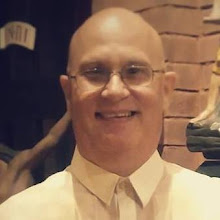Part of the art of programming a symphony concert is choosing complimentary works, making the whole program a satisfying whole. On the surface, this weekend's Kansas City Symphony concert had 3 works unified only by their common origin from the Germanic musical tradition. The concert opened with the Bach Brandenburg Concerto # 3, followed by the popular Mendelssohn E minor Violin Concerto and for the last half, the Haydn D minor Mass (Lord Nelson). Music Director Michael Stern conducted.
But craftily organized was this program. If it were not for Mendelssohn championing his works in the early 1800's, would we regard Bach as just another prolific baroque composer or worse consigned his oeuvre to oblivion? It is thus fitting that a Mendelssohn masterpiece follow one by Bach to remind us to be eternally grateful.
So what of Haydn and Mendelssohn? The year 2009 links them together, 200 years since Mendelssohn was born on Feb 3rd and Haydn's death the following May. Plus, it was interesting to watch the number of performers grow from the 10 strings and harpsichord of the Bach, to the classical size orchestra of the Mendelssohn to the strings, organ, brass and chorus and soloists of the Haydn.
The Bach was well done, precise and full of energy. The 10 strings stood in a semi circle at the front of the stage with the harpsichord off to the right. The intimate scoring worked well in the theatre for the most part. Possibly due to where I was sitting, the harpsichord was sweetly inaudible, which frankly is better than some harpsichord heavy recordings and performances I have experienced.
KC Symphony Concertmistress Kanako Ito was the soloist for the Mendelssohn. Ito is an accomplished violinist, demonstrating her prowess in a sublime Scheherazade a couple of seasons back and a polished Tchaikovsky Violin Concerto last season as well. Hers was an elegant and well-crafted performance, aided by Stern's deft and perfectly balanced orchestra. Special mention to the particularly fleet woodwinds, so vital to Mendelssohn's requirements. The second movement was singing and melodic, never cloying and so sickening sweet. Ito's energy and attention to musical line and detail never faltered throughout the concerto, earning her a rare (for me) standing ovation for her sensitive, even exciting performance.
Haydn's D minor Mass from 1798 is inexorably linked to Lord Horatio Nelson, looked upon as a hero in Austria for defeat of Napoleon's navy in Egypt. Inspired by the tense times of the late 1700's (the mass is also known as "Missa in Angustiis" or "Mass in Troubled Times"), the Lord Nelson Mass is one of Haydn's most inspiring and exciting works. In this case, Stern eschewed the more elaborate later orchestration and went with the original concept of strings, organ, 3 trumpets and chorus with soloists. The big chorus looked able to overpower the smaller orchestral forces, but never carried out the threat.
I rarely read the KC Star KC Symphony review but in this case I did. The reviewer mentioned the organ "stuck out like a sore thumb". Must have been where he was sitting, for as with the harpsichord in the Bach, I could rarely hear the organ which took the parts more commonly played by winds.
The Symphony Chorus has benefited from its new leadership, Grammy award winning conductor Charles Bruffy. Diction was clearer, entrances precise and balance, as mentioned, excellent. The soloists were a mixed bag. Soprano Mary Wilson was a bit strained, but not annoyingly so. Mezzo Sasha Cook was excellent and did a fine job in the big mezzo solo in the Agnus Dei. Tenor Thomas Cooley was a bit subdued but otherwise in fine voice. Baritone Nathaniel Webster simply did not have the depths for the demanding part, probably more suited for a bass than a baritone.
Stern and the orchestra have turned in a number of excellent Haydn performances over the past few years and this one could easily be added to the list.
Sunday, October 25, 2009
Subscribe to:
Post Comments (Atom)



No comments:
Post a Comment